Lan Su Garden, located in downtown Portland, Oregon, offers a peaceful escape from the city. The garden is home to plants indigenous to China, including evergreen trees and shrubs. This makes it a beautiful spot, even in the cold season. This garden is as close as you can get to a classical garden of Suzhou, without actually visiting China. We were gifted a sunny winter day, which is uncommon for Portland, so we decided to make the best of it. I’d like to return and take some additional photos in the other seasons as well. The spring in particular.
The garden offers yearly memberships for $60, which provide free admission for yourself in a guest. Alternatively a single entry adult ticket is $12.95. Coming up for the Chinese New Year Festival(January 25 – February 9), they have a 20 foot dragon lantern sculpture, dragon and lion dance teams, along with other activities (for a separate admission).

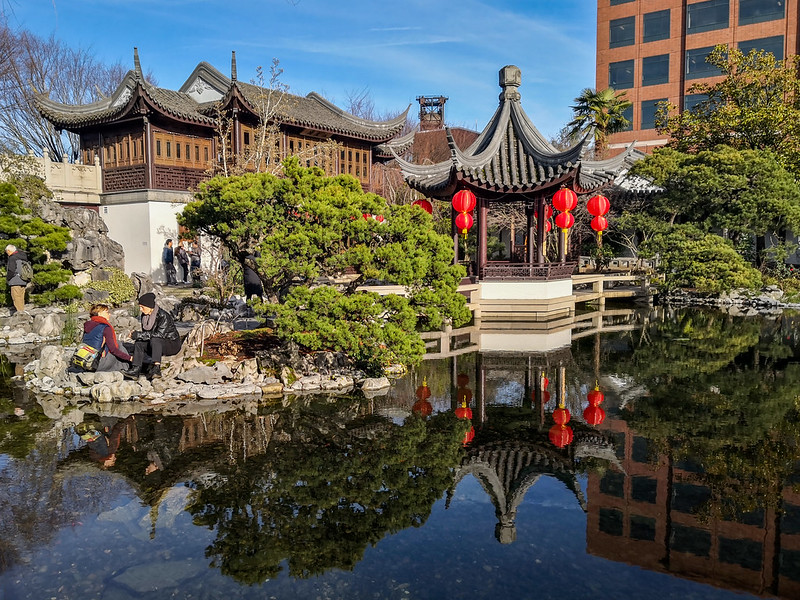
The two-story structure in the background is the Tea House, which offers a variety of teas and small plates. In the foreground is the Moonlocking Pavilion, whose shadow helps to reflect the moonlight at night.

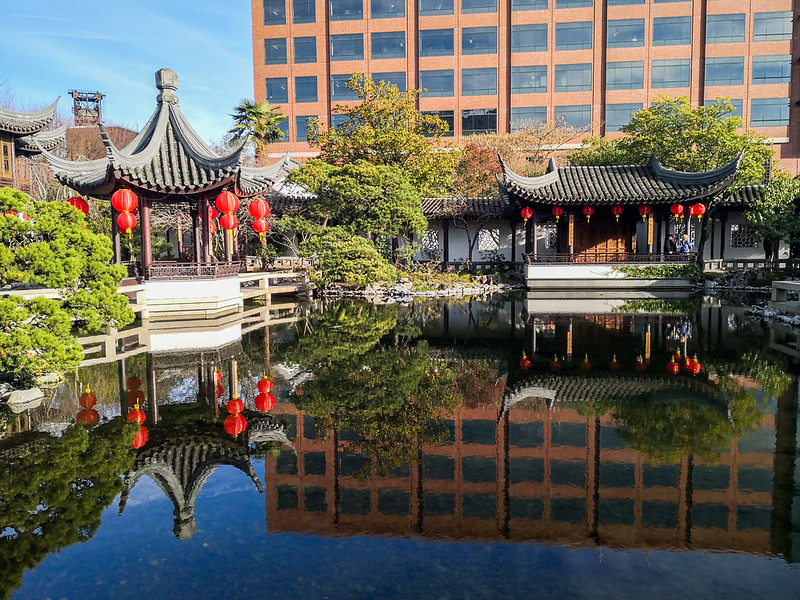
The large, well-kept pond is home to brightly colored koi and goldfish, though the intense reflection of sunlight made them difficult to see.

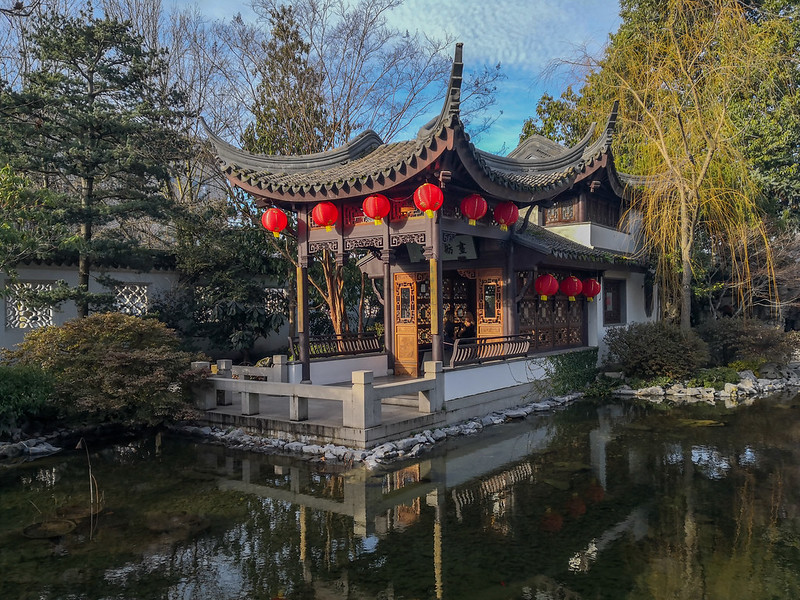
Pictured is a pavilion titled “Painted Boat In Misty Rain”, which represents the “boat of friendship between” Portland and Suzhou.

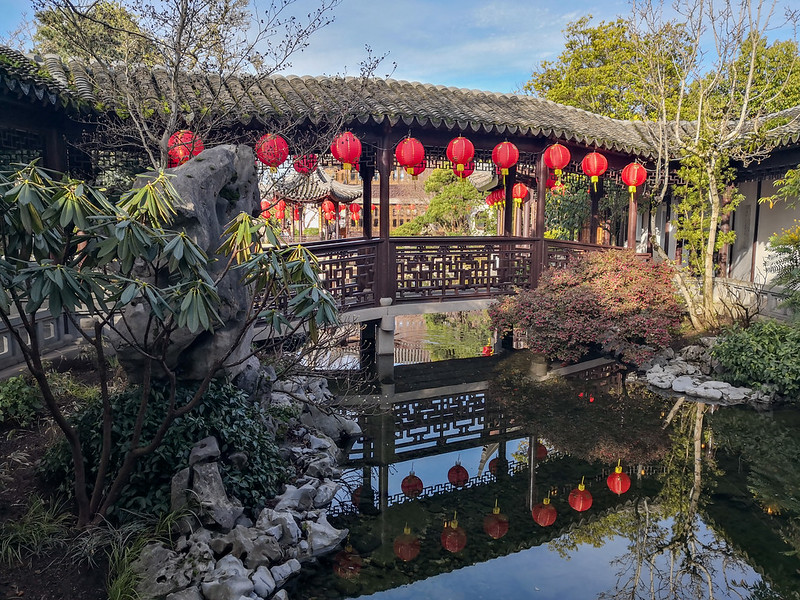

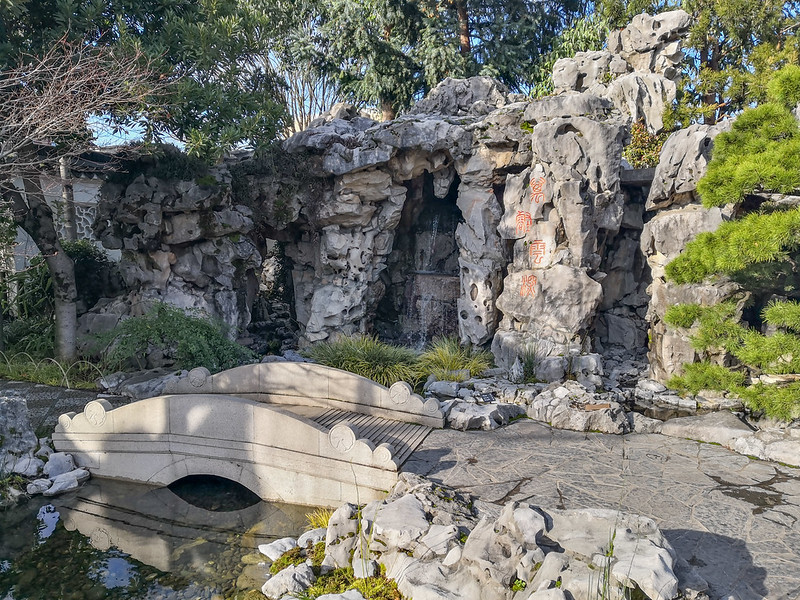

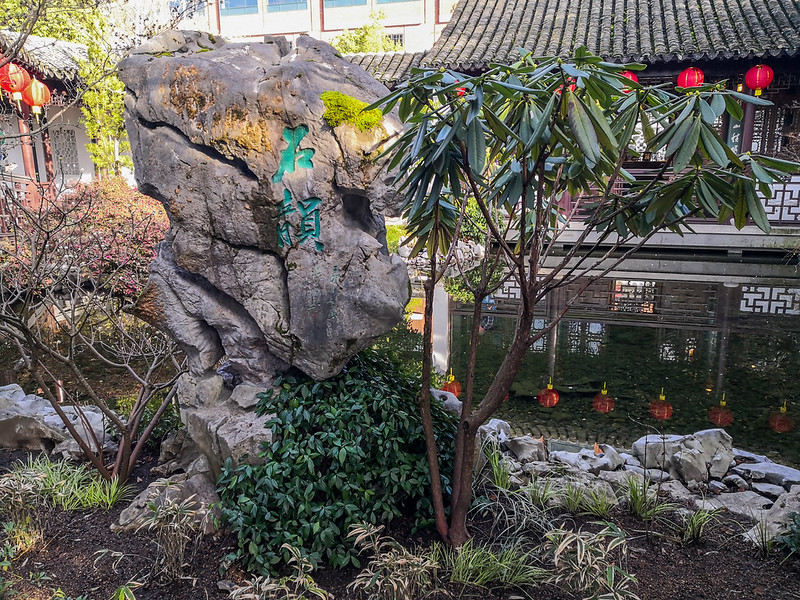
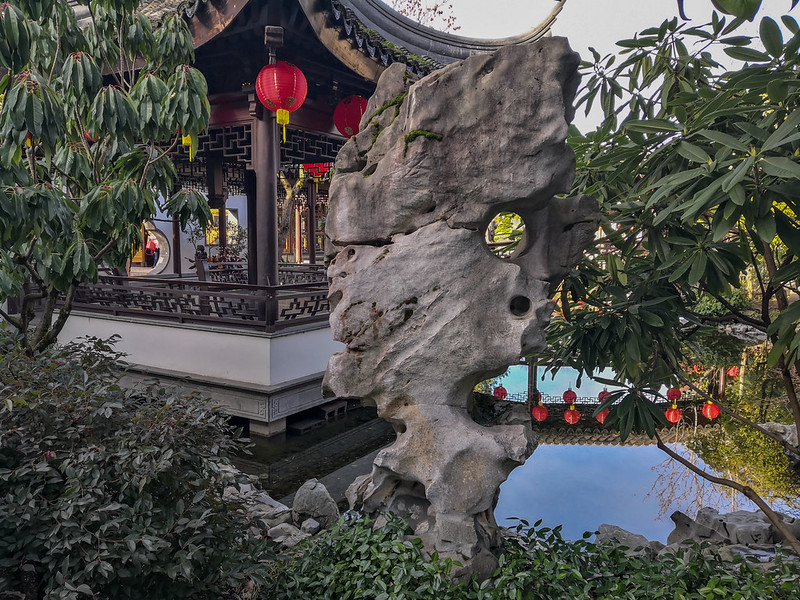

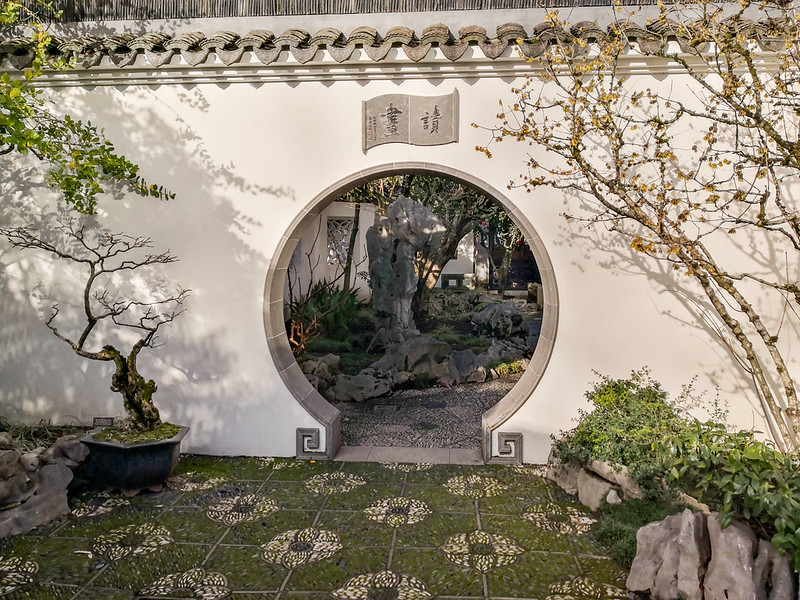
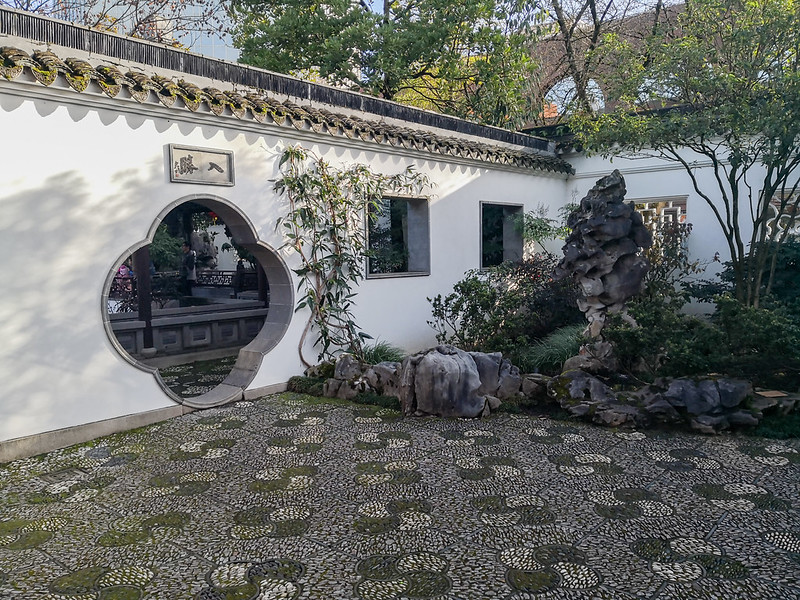

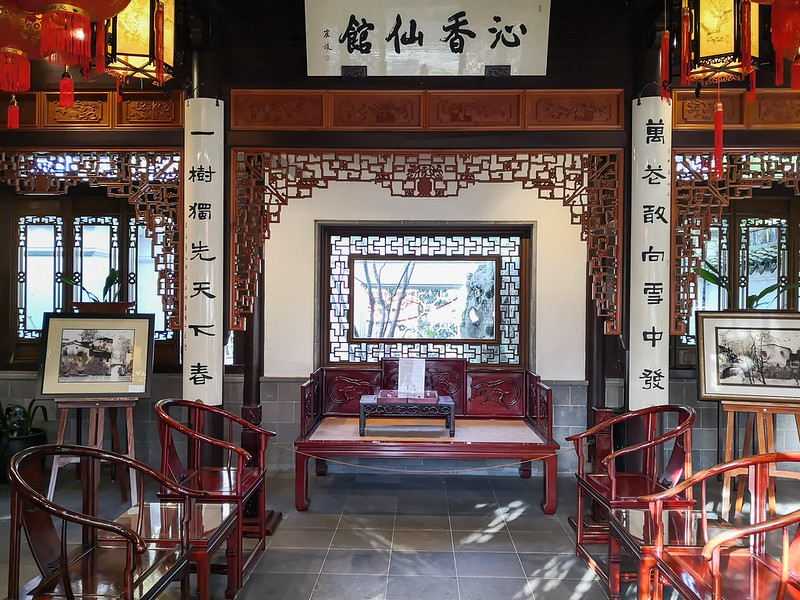
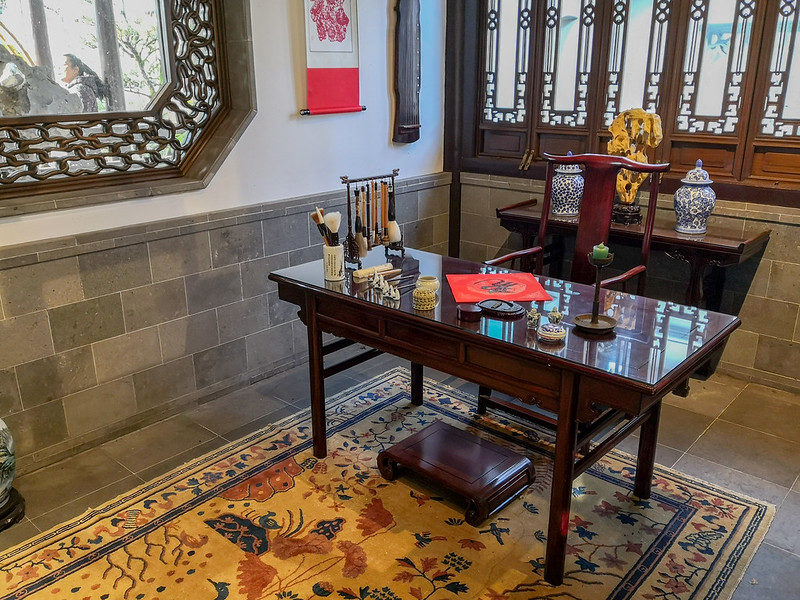

Thanks for dropping by! I hope that you enjoyed my travel photos and commentary, and will return for more travel content in the future.
References:
Between Lake and Mountain Lies True Meaning[Brochure]. Lan Su Chinese Garden, Winter 2020
